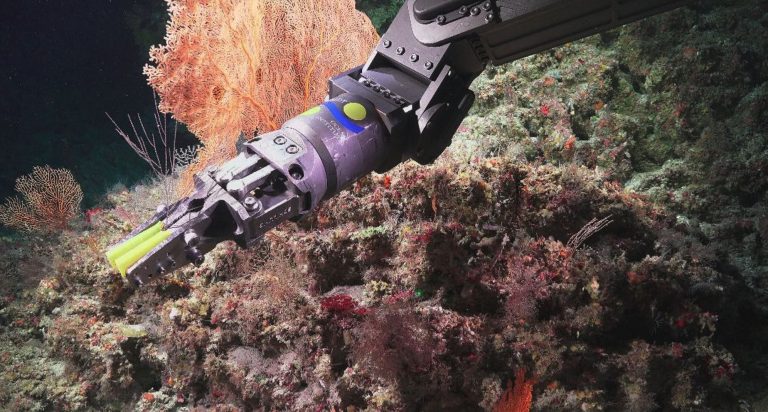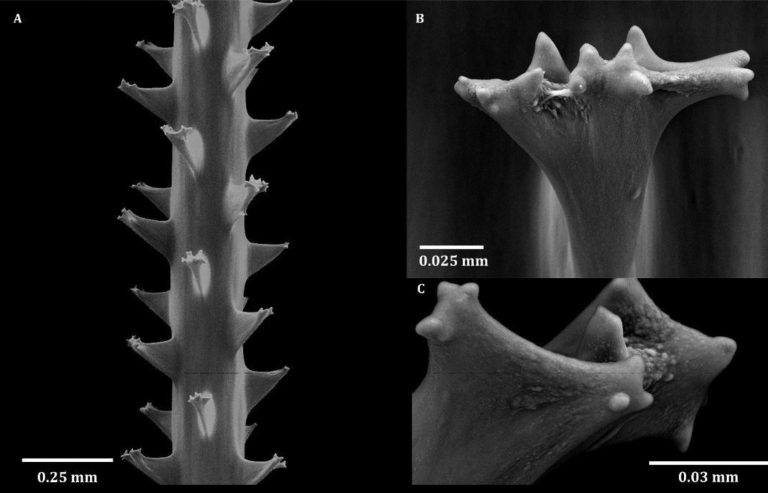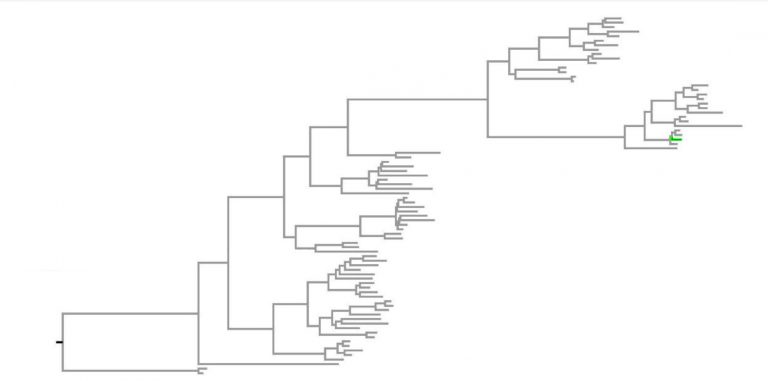An audience of hundreds – sometimes thousands – of people ashore watch the live-stream intensely as Remotely Operated Vehicle (ROV) dives and collects samples. Sometimes when collecting a sample, a researcher narrating the dive suggests that a sample might represent an undescribed (i.e., new-to-science) species. It can take years to formally describe a new species. Here is a closer look at the process.

Collection:
On Dive 385 during the expedition “Seamounts, Canyons, and Reefs of the Coral Sea,” a black coral was collected during the exploration of the Ribbon Reef Canyons at 111 meters (Collection Video). The robotic arm of Schmidt Ocean Institute’s ROV SuBastian carefully collected the coral after the research team on board noted that gathering a sample of the coral could help resolve the taxonomy of the family to which it belongs. Additionally, this specimen was found at a depth too deep for SCUBA divers (yet generally shallower than ROVs explore), making it a specimen that could represent an undescribed species. The specimen was collected by the ROV and brought back to the Museum of Tropical Queensland, in Townsville, Australia for further investigation.

High-Resolution Imaging:
To describe the features of a coral and identify the species, scientists study features both large and small. Large features could include examples such as the branching pattern or the height of the coral. For black corals, such as this one collected on Falkor, the small features studied consist of microscopic (less than 1 mm tall) skeletal spines that are found on all black coral species. Spines can vary from smooth and triangular, to bumpy and irregular. Using a scanning electron microscope, the extremely bumpy and irregular spines of this coral were revealed. These types of spine features are not found on any currently known species and are another piece of evidence that this may be an undescribed species!

DNA Sequencing:
Physical features can be misleading when identifying a species. For example, a coral species might have higher or lower-than-normal density of branches to adapt to its particular energy environment. Therefore, we also compare the DNA between species to investigate their genetic relationships. These DNA relationships are depicted in a phylogenetic tree (like a family tree) to confirm species’ identifications. This tree displays that the black coral specimen collected on Falkor (highlighted in green in the tree) is different from other currently described species, confirming that it is a new species! The tree also tells us to which family the new species belongs, which in this case is the family Antipathidae.
Formal Species Descriptions:
The physical and genetic descriptions of the new species are submitted to a taxonomic journal, which is peer-reviewed before being published. New species are then submitted to an official registry of species names. Information about the new species is then uploaded to biodiversity databases so it is publicly available for researchers, practitioners, government agencies, and community groups. For example, information about this new Australian species will be included in the Atlas of Living Australia (ALA), which makes Australian biodiversity data accessible and reusable for the public.

How Does This Lead To Conservation?
Those tasked with conserving biodiversity use databases like ALA to identify the ranges of species, where the ranges of species overlap, and compare these data with information about threats towards biodiversity. Describing new species is important because they fill gaps in biodiversity data and enable decision makers to make more informed conservation decisions. Before Falkor explored the Great Barrier Reef and Coral Sea, comparatively few species were known to occur in the deep sea. This expedition showed that this newly described species of black coral, and many more species, live in the depths of the sea than were currently thought. Now, more targeted conservation interventions like marine reserves may be designated in ways that best protect biodiversity in the largest reef system in the world!
Author: Jeremy Horowitz
